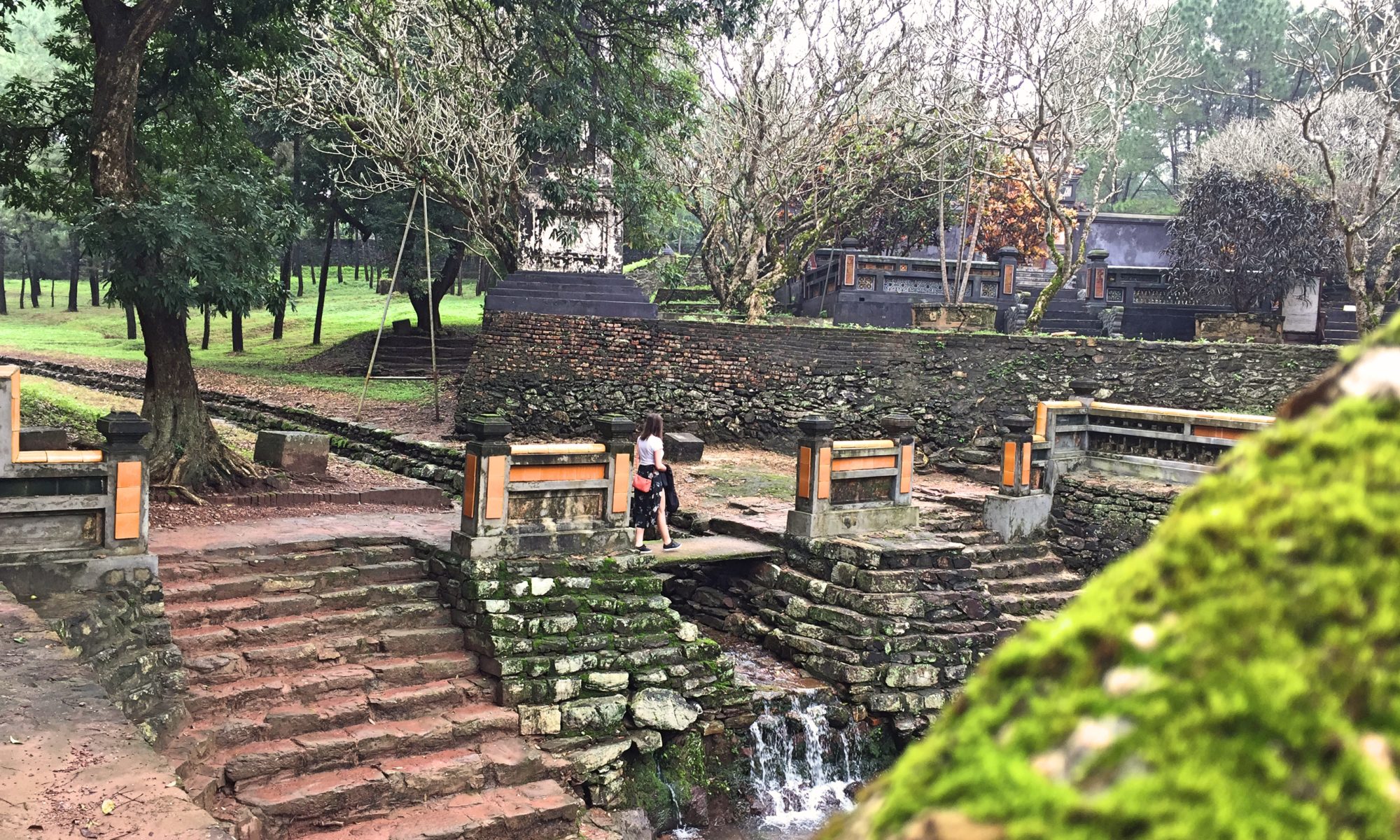Hue Vietnam, a medium-sized provincial city in central-Vietnam, is included in most itinerary’s because of its history and location. It served as the capital of Vietnam from 1802-1945 and is perfectly on route as a stop-over if you travel the country from North to South. The town itself is a dirty, busy and rather uninspiring place. The Royal Tombs in close vicinity however are a delight and definitely make your visit worth the extra stop.
– What to do in Hue Vietnam –
When in Hue you will immediately find out that this is not the place to linger around for the atmospheric town, or pumping night-life. Hue is busy, but does not feel ‘urban’ due to its lack of high-rise development and pretty architecture. Since you will be visiting for only one or two days, and the town itself is not worth exploring, you are best off drawing up a busy schedule to spend as much time as possible at sights, and spend your days relaxing or ‘taking it slow’ someplace else.
The old Citadel
Costs: 150,000D
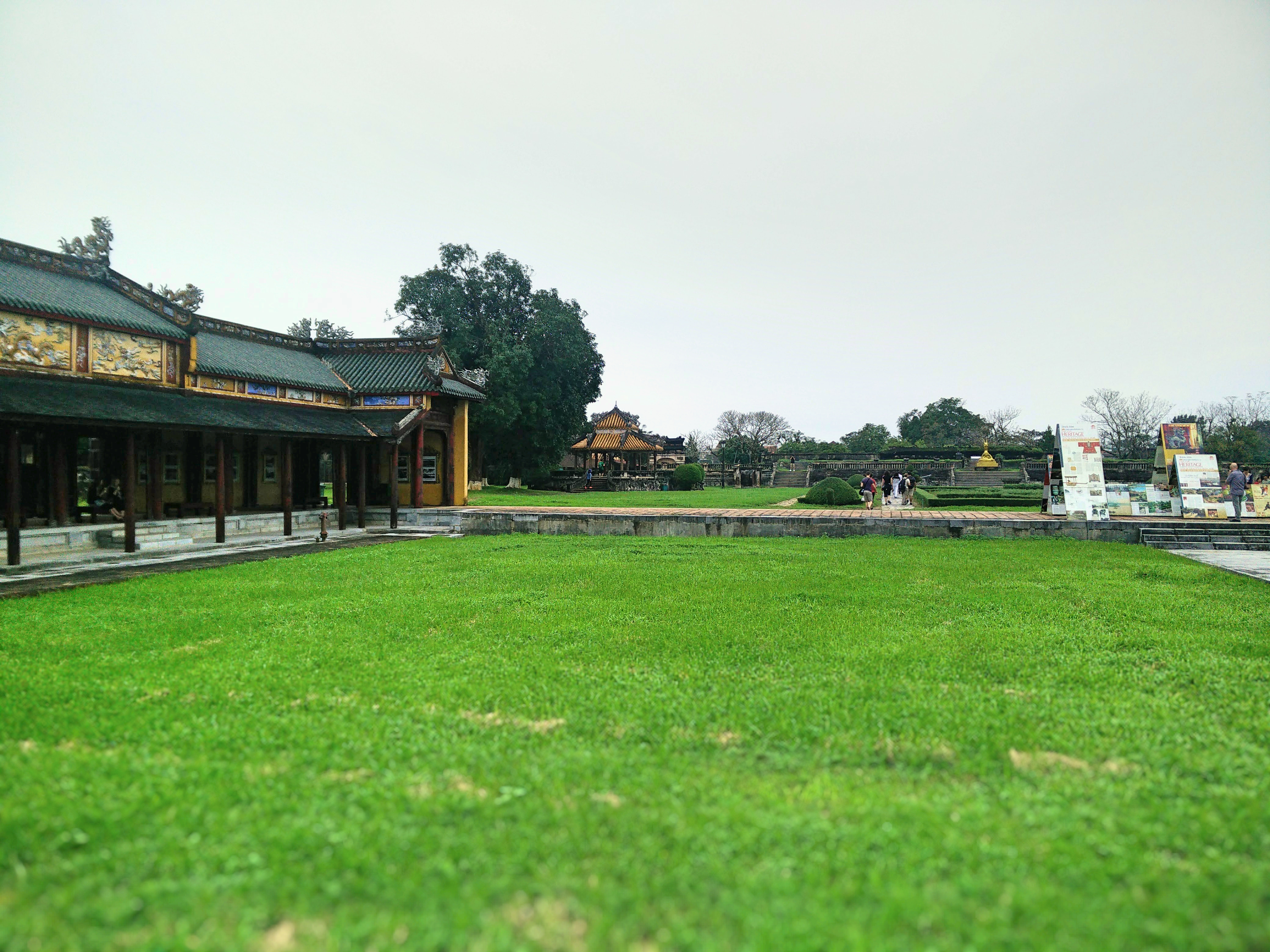
The main attraction in Hue is the old Citadel. This was an imperial ‘city-within-a-city’ which was off-limits for everyone that was not the emperor, its family or its servants during the years 1802-1945, when Hue was the capital of Vietnam. Because of this it is often compared to the Forbidden City in Beijing, China but it my view, it does not live up to this name. Kinh Thanh, as the citadel is locally called, is squared off by huge fortified walls, and within these walls another set of walls form the Imperial Enclosure.
While the walls are quite impressive, most buildings, masonry and statutes inside are reduced to nothing more than a pile of rubble. When walking here its hard to image that not too long ago the place was one of the most exquisite and delicate places in the region.
When buying your ticket for the old Citadel you can alternatively buy a combo-ticket for the Citadel + 3 Royal Tombs for about 50,000D extra. I highly recommend doing so, as these are certainly worth the visit.
The Royal Tombs
Costs: 50,000 per tomb
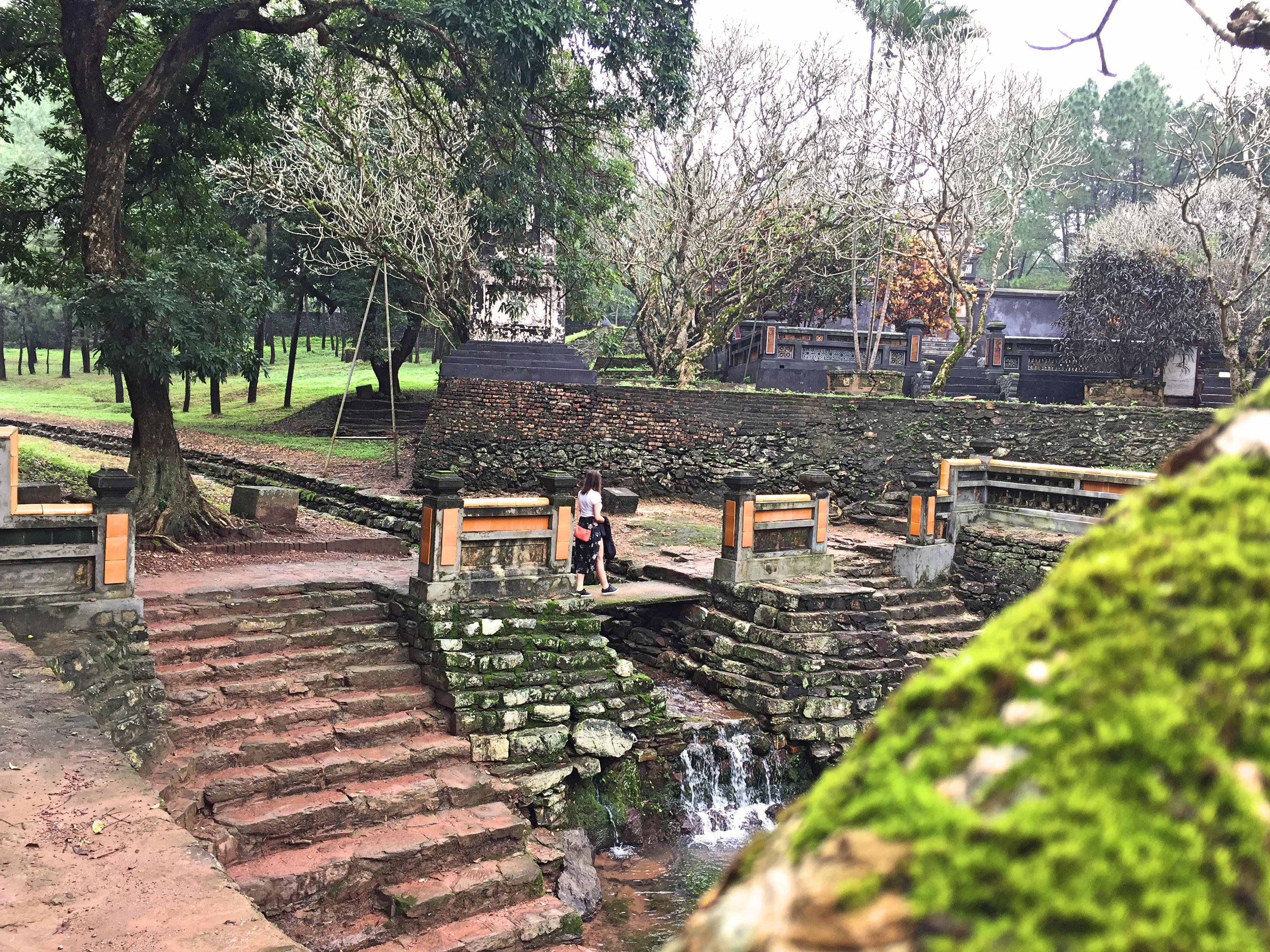
Visiting the Royal Tombs can be done in several ways. You can book a full-day guided tour for 100,000D and upward (excluding entrance-fees. Doing this ‘you get what you pay for’. In a tour you visit the Citadel, the Royal Tombs and an extra location that varies from the Thien Mu Pagoda, an extra tomb (probably Thieu Tri), or a martial-arts demonstration. Or all 3 of them. It often includes lunch.
Alternatively you can go out and explore on your own by scooter-bike or bicycle. The flat terrain and relatively short distances between the sights definitely make this a viable option! Lastly you can charter a private taxi if you got money to burn. I would opt for cycling or taking a scooter-bike. Prices range from 100,000-200,000D for a scooter-bike, and half this for a bicycle.
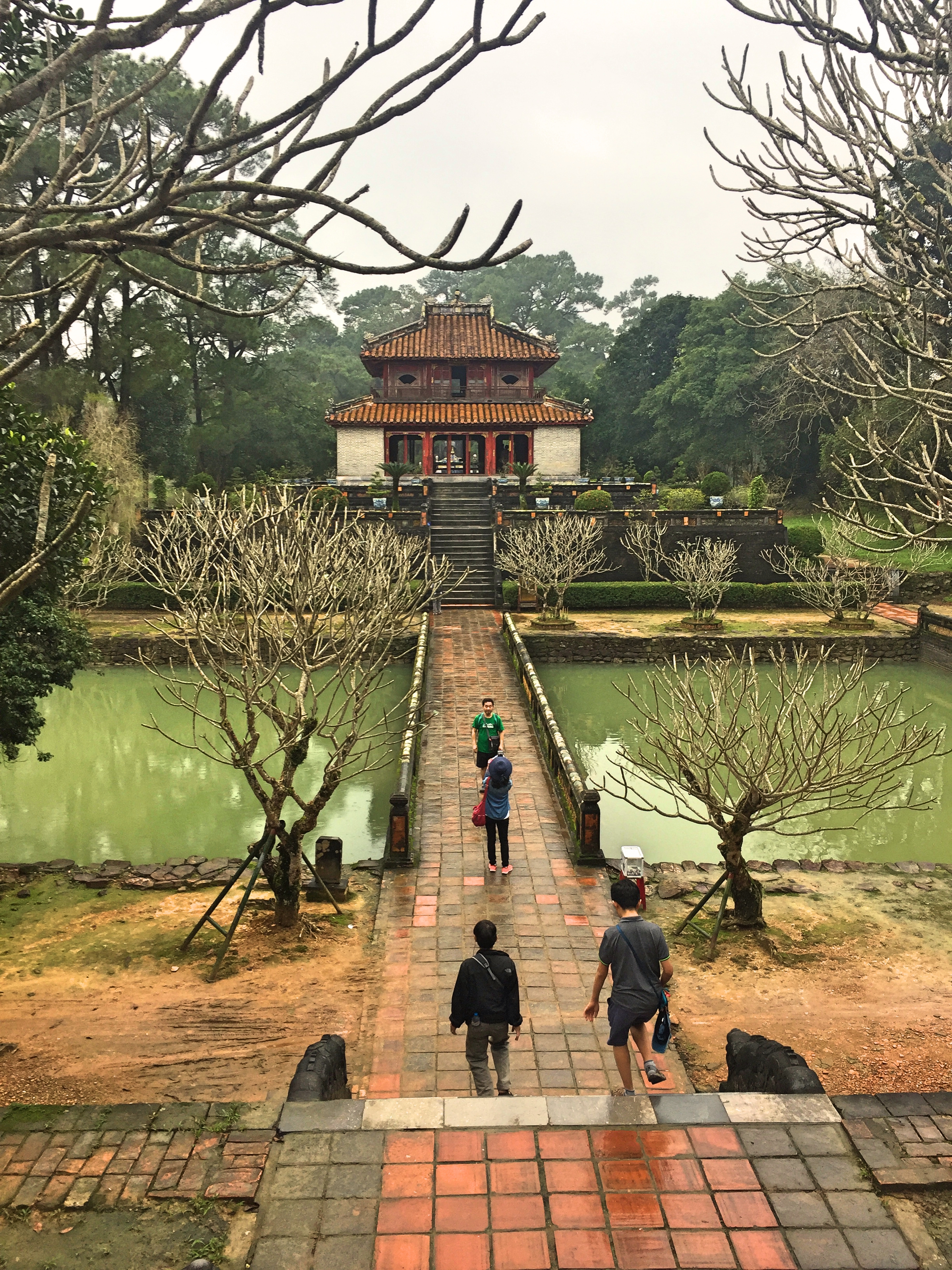
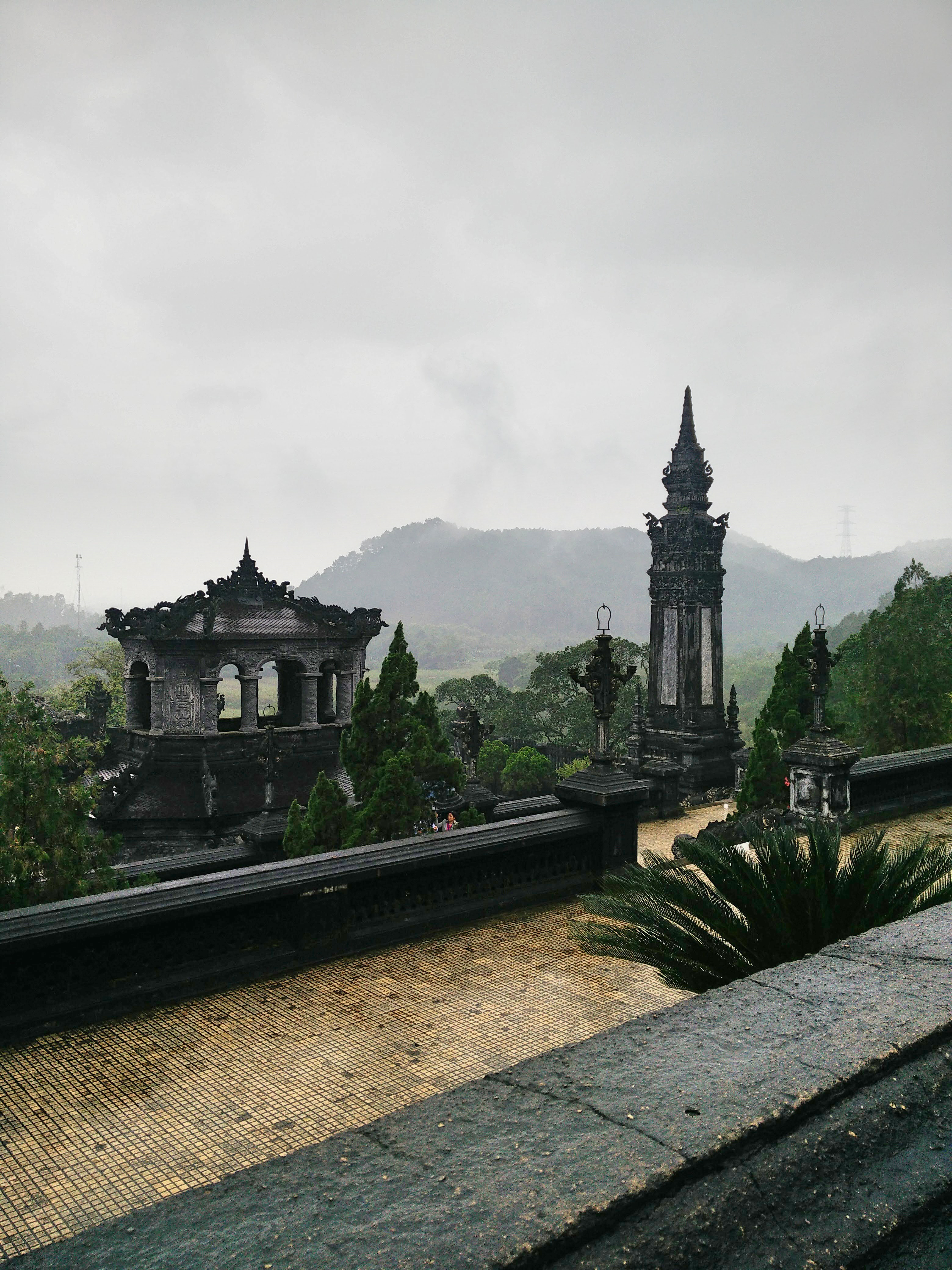
With the Royal Tombs being the must-see, these are what you should be visiting first. The tomb of Tu Duc is the closest to Hue (a few kilometers to the south) and an impressive sight. The large compound holds many temples that are, contrary to the old Citadel, very well maintained, and is dotted with trees, ponds, canals and small wooden bridges. This tomb, being the largest, feels the most ‘imperial’ of all. Make sure you allow yourself at least a full hour to walk around here, as it is quite big.
Next of is the Minh Mang tomb, around 7 kilometers further south-wards (crossing the Perfume River). While smaller, this tomb is certainly not less atmospheric, with it crooked trees and forest-setting it oozes calmness and tranquility.
Only about 3 kilometers from the Minh Mang tomb you’ll find the Khai Dinh tomb. This tomb is set on top of a hill which can be climbed using a couple of wide steep flights of stairs. On top of the stairs you’ll get a great view of the surroundings, and will find Thien Dinh palace, which has a pretty embroiled interior.
From here you can either take the direct way back into Hue (which is about 8 kilometers), or alternatively you can travel back past Minh Mang, following the Perfume River northwards until you find the Thieu Tri tomb on your right (only about 1500 meters from the Tu Duc tomb), I personally found this to be the lesser of the four Royal Tombs and therefore if you already visited the other three I think you won’t miss out much on this one.
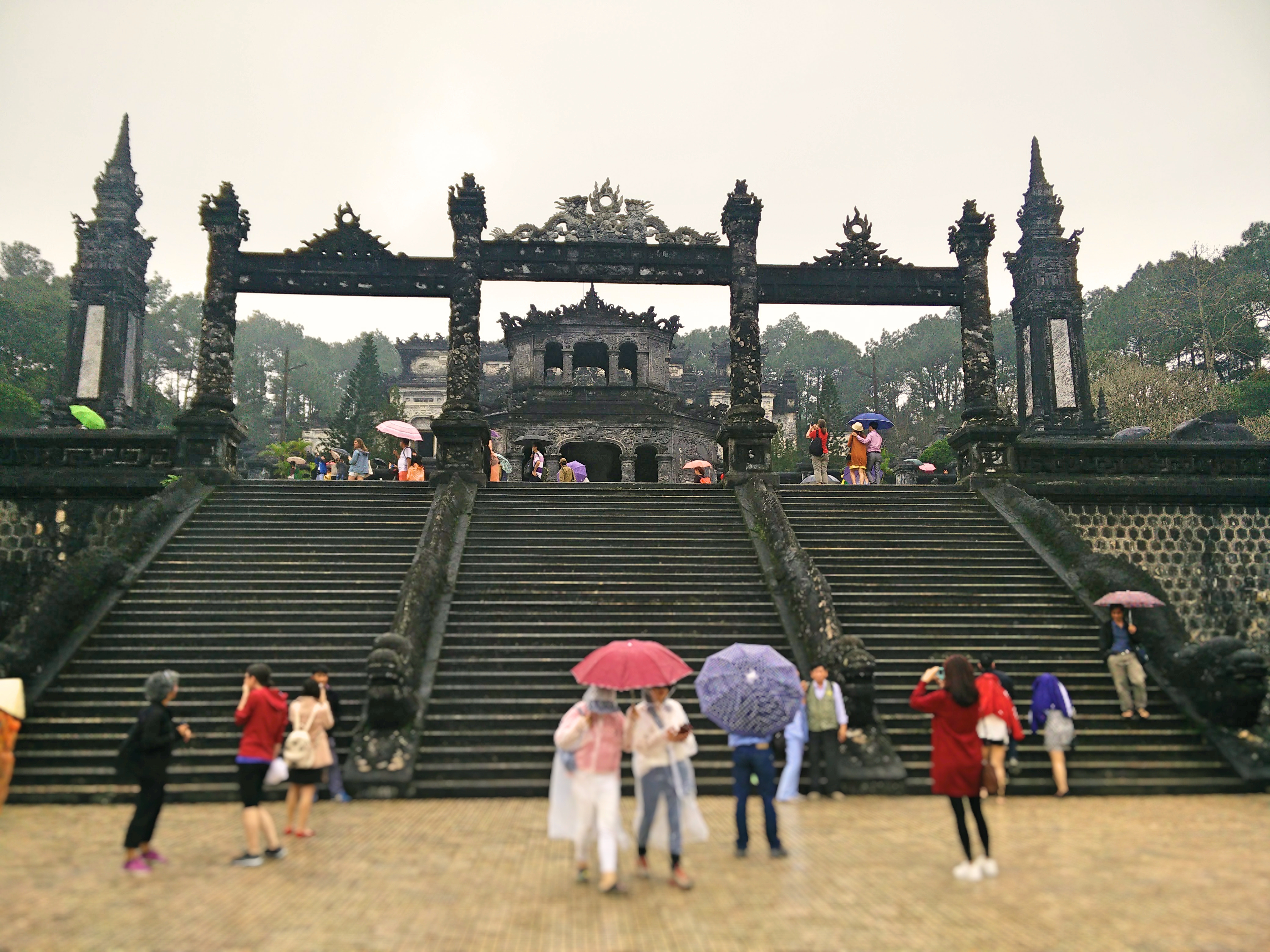
Thien Mu Pagoda
If travelling independently, after visiting the tombes, you will probably get back to Hue in the early afternoon. This gives you enough time to have a quick street-side lunch, visit the old Citadel and visit the Thien Mu Pagoda afterwards around sun-set.
Many tours take you to the Pagoda by boat, and while the change of transportation is a plus, the boat-ride itself is nothing special. It should not cost you too much to haggle an extra spot on one of the boats if travelling independently, but alternatively you can follow the road (on the Citadel-side of the river) about a 1000 meters west-wards to end up at the Pagoda.
The Pagoda is a small nice pagoda next to a few small religious buildings that sees praying Buddhist monks throughout the day. The entrance is free so this will be a good close-off of a busy day of temple-hopping. Use the evening to try the Hue cuisine, which is slightly different from the rest of Vietnam and quickly gaining in popularity as a distinct cuisine. Mon Hue, one of the biggest ‘fast-food’ chains in Vietnam is at least partly responsible for this upsurge.
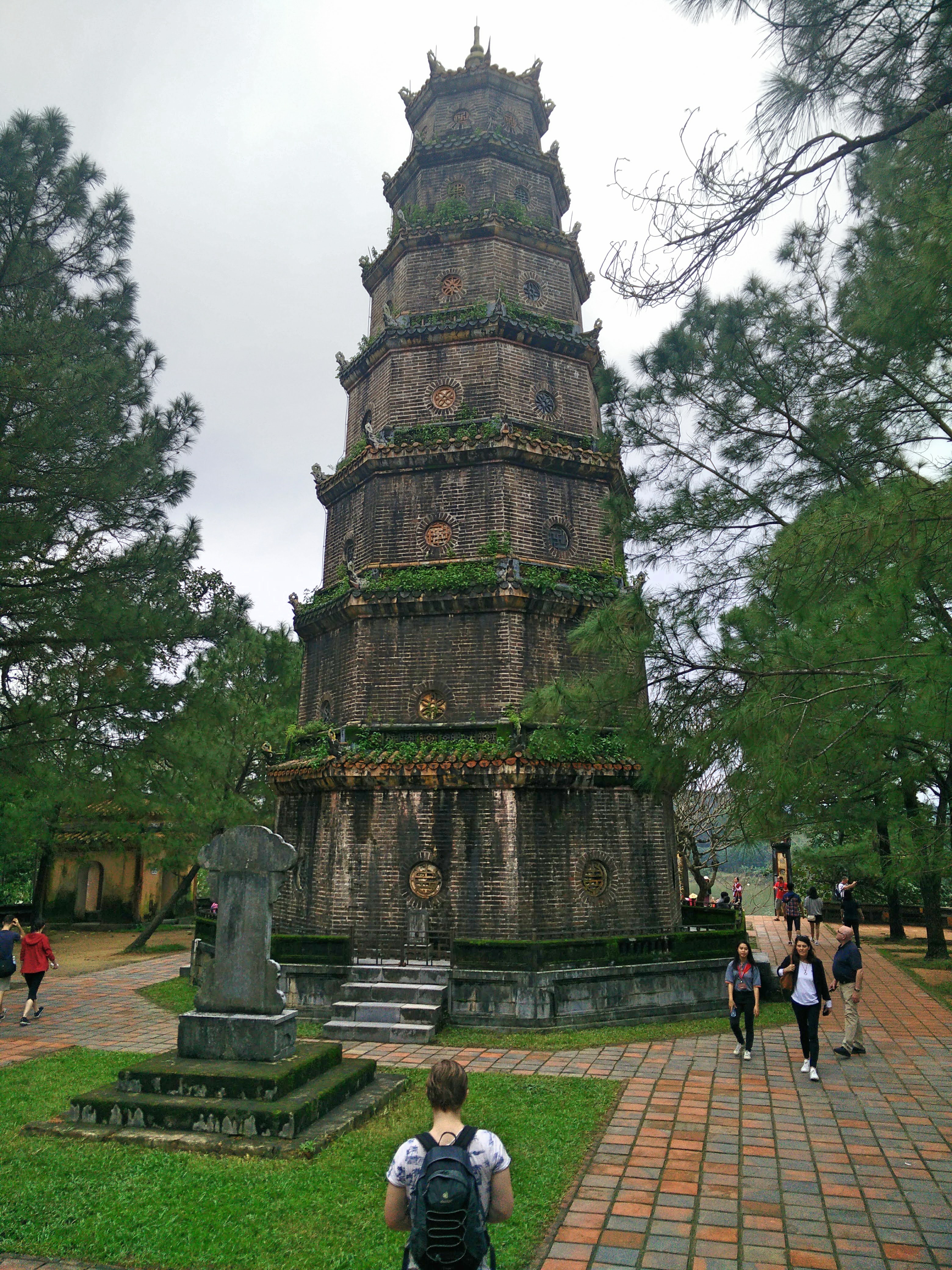
– Sleep & eat recommendations –
Hue has three little parallel streets (Pham Ngu Lao is the middle one and the liveliest) where all travelers seem to flock to. This is the best place to go to for food, a drink and some company. Most backpackers and hotels are located in this area called ‘South-Bank’. Crossing the bridge coming from the Citadel takes you to Le Loi street, turn left (northwards) and Pham Ngu Lao is on your right after a few minutes walk. Bar Why Not? has good western food, go to DMZ for a decent happy hour but skip Le’s Garden Bar, as the (Vietnamese) food is sub-par.
For a lively hostel, try Hue Backpackers (on Pham Ngu Lao). If you are looking for a clean, value-for-money hotel with awesome helpful staff, you should book Than Thien Friendly Hotel (for about 300,000D for a double incl. breakfast).
– Practical information –
When
Hue has a dry-season from the end of January until mid-August, with the most sun-hours from April to August. However these sunny months can also bring sweltering temperatures so your best chance on sunny days with a pleasant temperature is early spring. Hue’s domestic tourism peaks in July and August, but other than that it does not matter much whether you visit during the week, or in a weekend.
Budget
| Daily Budget | EUR 30 (35 USD) |
| Street food | EUR 2 ( 3 USD) |
| Meal in a restaurant | EUR 5 (6 USD) |
| Dorm | EUR 5 ( 6 USD) |
| Double in a 3-star hotel | EUR 20-50 (25-60 USD) |
In & Out
Hue has its own airport (Phu Ba, 15 kilometers south-east of town) which has domestic flights to most locations throughout Vietnam.
Train
The railway-station is located about 2 kilometers south of the South-Bank area. Just follow Le Loi street south or crossing the bridge from the Citadel turn right, until you hit into it. Tickets are available online (12go.asia) or buy them at the station. Check vietnam-railway.com for the schedule, the trains run on time quite well. Either take the train north to Ninh Binh (read my article on why you should visit this place!) and Hanoi (around 10-12 hours), or southwards to Da Nang (to visit Hoi-An) and Nha Trang.
Bus
Apart from the tourist-buses that can be booked from every hostel, I don’t recommend taking the local buses. Hue has 2 bus-stations, both 5 kilometers out of town (south and north). Figuring out the schedule can be challenging, and the buses are slow, dirty and break down a lot.
Scooter
However by far the best way of getting in or out of Hue is by taking a scooter-bike and ride to Hoi-An over the Hai-Van pass and through Da Nang all the way to Hoi An. The ride takes about a full-day, and you can arrange for your luggage to be send ahead. This is one of the best experiences I had in Vietnam. Something you really really really really should not skip! Read my full article on the Hai Van pass here.


